Hunan Xuanye Ecological Agricultural Development Co., Ltd.
0086-731-85138999
© Copyright 2018 of Hunan Xuanye Ecological Agricultural Development Co., Ltd. All rights reserved 湘ICP备19000185号-2 Website Constructed by: www.300.cn changsha
WeChat public number
Links for On-line Shops
Company Address: 11th Floor, Xiangchengwanxing South Building, No. 528, Youyi Road,
Tianxin District, Changsha City, Hunan Province, China
Company Tel: 0086-731-85138999
E-mail: hnxuanye@163.com
Company website: www.xuanyegroup.com
NEWS
Past and now of Silk Roads: A grain of rice with faith
Beijing, May 4, Xinhua News Agency, by Ling Shuo, reporter of Xinhua News Agency

999 years ago, one day in October in the second year of Tianxi of Song Dynasty, it was late in the autumn. In Bianliaing, the capital of Song (Kaifeng, Henan Province today), Zhao Heng, Song Zhenzong, called many of his courtiers to watch harvesting rice in the Hall of Yuchen in the Royal Palace. In front of the Hall of Yuchen, there was a square-shape garden of 2 mu (Chinese area unit) where only rice was grown other than flowers and grass.
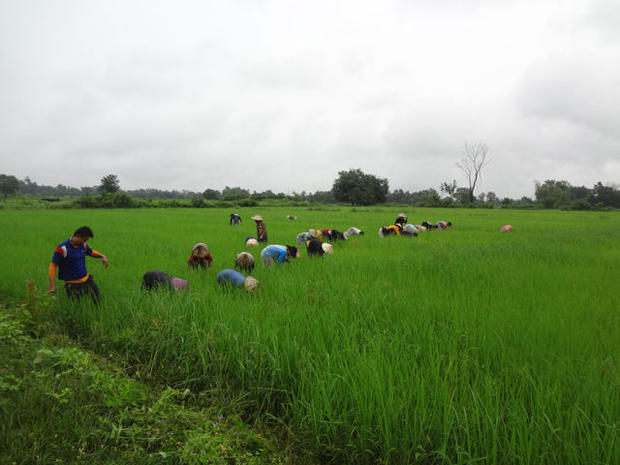
Laotian farmers are growing rice in the agricultural industry park developed by a Chinese company
One day late in February 2017, it was just the beginning of spring in China. A middle-aged man named Xu Guowu packed up again. He was ready to go to Savannakhet Province, Laos, where the hottest season of the year was coming. That was also the best time to prepare soil for rice.
Xu Guowu didn’t know about the story that had happened in the time of Song Zhenzong. Only the maritime Silk Roads that extended from the past to now witnessed a legend of rice that happened a thousand years ago a thousand miles away.
Shock of a bowl of rice
In 997, Song Zhenzong ascended to the throne. Very soon, he found rice variety grown in the regions including Suzhou, Anhui, Zhejiang and Guangxi provinces had a reduction and even zero in yields as long as drought happened. At that time, a population of people in the Northern Song Dynasty was booming and a bowl of rice had become a matter of first importance. Song Zhenzong decided then to start from rice variety in order to find solutions.
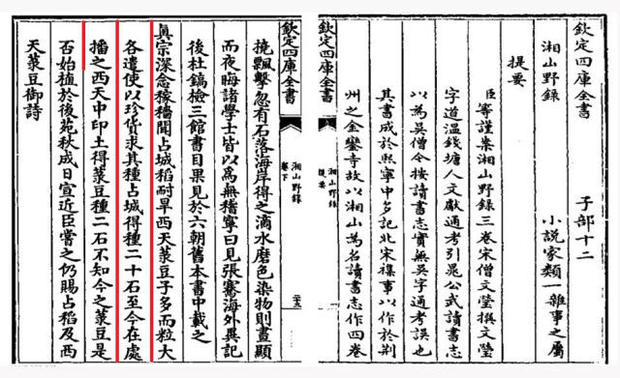
Many years later, Song Zhenzong found a rice variety called Champa rice which had a strong drought tolerance and short growing cycle. After trial planting in Royal Palace, Song Zhenzong gave orders of growing 30,000 hu (1 hu in Song Dynasty = 15kg) of Champa rice in many places.
Several years later, rice in the regions south of the Yangtze River increased greatly in yields. According to a rough estimate, yields of Champa rice in some areas in regions south of the Yangtze River increased from 60kg to above 100kg, laying a foundation for relocating a national crop industry center southward. By subsequent Southern Song Dynasty, ‘a good harvest in Suzhou and Huzhou only is abundant enough to feed the people all over the country.’ Rice began to appear on the dining tables of regular families.
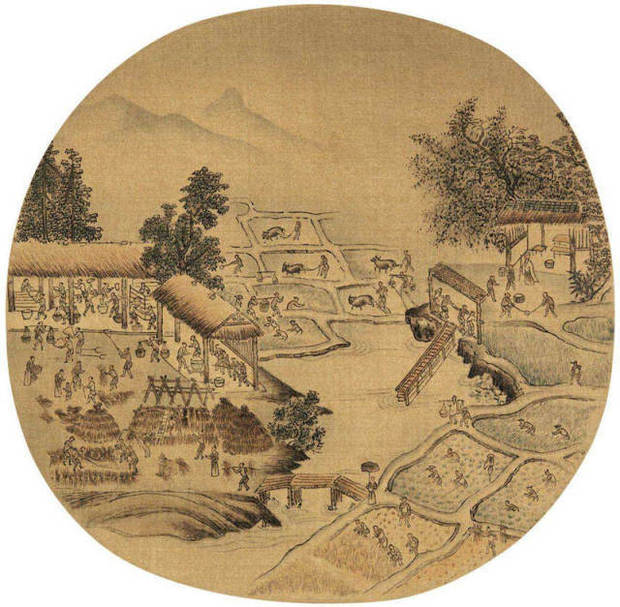
Promotion of Champa rice greatly increased the crop yields in Song Dynasty.
Xu Guowu came to Laos for the first time with the Delegation of the Belt and Roadof Hunan Province in 2014, where he had a bowl of local rice. ‘I can still remember that when I was living on campus in high schools, my family prepared at the beginning of each term a bag of rice for me, which was my grain rations for the whole term. The aroma of rice remains in my memory of taste. The bowl of rice in Laos had a quake in my heart and that was a taste from my childhood.’ said Xu Guowu.
Following the aroma of rice flowers, he searched for rice fields everywhere. He went to the plain in the south – the most important rice growing region in Laos. What surprised him most was aroma of rice flowers and outdated growing technology, low yields and depression in production. ‘There are two phrases to describe what impressed me during that investigation in the rice growing regions: “slash and burn” and “wide sowing but meager harvest”.’
He then made up his mind to change this outdated rice growing and producing mode at the local.
Settlement of Chinese standards
Few people today know about Champa rice. Champa was an ancient country in Southeast Asia, with its territory centered with middle and south of Vietnam and extended to today’s Northeast of Cambodia and South of Laos including southern plain of Laos. According to archaeological research, Champa rice was introduced into the coastal areas in Fujian Province via the Maritime Silk Road and then grown in the south of Fujian Province. It was promoted in the time of Song Zhenzong and grown until Qing Dynasty.
Introduction of Champa rice changed the structure of rice varieties dominated by round-grain non-glutinous rice in the north of Yangtze River and the south of Huai River as well as Zhejiang Province and enabled long-grain rice to be widely grown in China. Lin Zexu once said, ‘Champa rice has come to China since Song Dynasty and has spread to Guangdong, Guangxi, Jingxiang (Hunan today), Jiangyou (Jiangxi today) and east of Zhejiang. Yields of Champa rice, by twice harvest a year, are equivalent to those of late rice’

Illustrations regarding rice growing in ancient time in Tiangong Kaiwu (Exploitation of the Works of Nature) of Ming Dynasty。
A thousand years later, rice grown in Laos today is offspring of Champa rice but in an embarrassing situation – outdated green. There are neither fertilizer companies within the territory of Laos nor chemical residuals in the production process, which brings up delicacy of original ecology. But quality of rice varieties varies and fails to reach the international standards due to outdated industry structure and low level of technology.
‘”Green” doesn’t necessarily represent high quality. It is standardization that only can make “green” valuable.’ Xu Guowu said. ‘Chinese standards must go globally and become a benchmark of high quality.’
In 2015, Xu Guowu began to sow rice in Laos for the first time. He used a production mode of 2plus3. Local farmers offered land and labors while Xu Guowu provided capital, technology and buy-back channel. In addition, he stipulated strict standards for various steps of rice growing an these standards later became adopted by Laotian government.
‘Before we came to Laos, there was only one rice processing plant invested by a French within the territory of Laos, which was almost in accordance with Chinese standards for rice processing and exporting. After we introduced Chinese standards into Laos, there are now 7 rice processing plants using Chinese standards including four French companies,’ said Xu Guowu, ‘Chinese standards have become standards for exports of Laotian rice. Chinese standards have also been adopted by more and more countries and enterprises.’
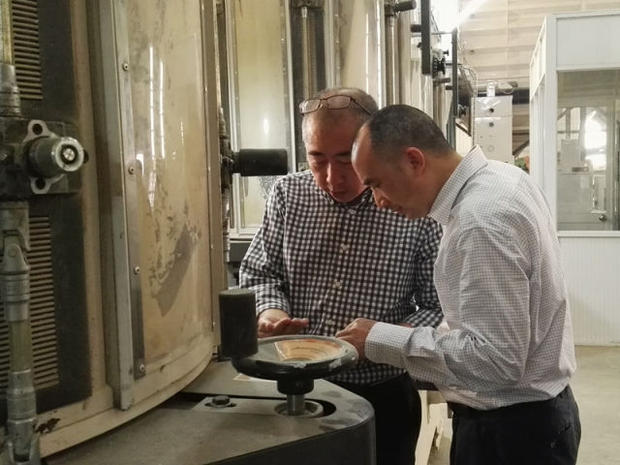
Xu Guowu (front) is inspecting how Chinese standards for rice perform in a French rice processing plant.
Seeing that foreign companies including western companies use Chinese standards in succession, Xu Guowu said that it’s evidenced that China is acknowledged by the world, which is hard specifications of soft power.
Undertaker of Chinese wisdom
‘Agriculture is a matter of first important for a country as crops for regular people.’ Ancient Chinese related crops closely with life of people, farming and national development. Measures and policies including encouragement in land reclamation, reduction of taxation and cost, construction of water facilities and promotion of technology strongly facilitated the improvement of agricultural development and increase of crop yields.
According to Xu Guowu, compared to traditional agricultural policy, the Belt and Road presents a broader mind to an instruction for international agricultural cooperation. ‘Not only does the Belt and Road bring benefits to a country and its people, but also combine two markets and two resources using Chinese standards in order to realize two-win business operation and development. Most importantly, the Belt and Road provides guaranty for the locals, supply to the regions and balance the whole world in virtue of Chinese wisdom and Chinese solutions. This is a new idea of China for global governance.’
Over these years, many foreign companies have come to Laos for agriculture opportunities but lost much money very often because of poor foundation in all aspects at the local. Agricultural products do not make high profits, with more input but less output. But Xu Guowu got through by growing rice in Laos for three years.
‘Different from other industries, agriculture carries a hope of life. Agriculture is not simply a business and international cooperation in agriculture is not a once-for-all deal.’ said Xu Guowu. ‘Responsibilities and undertaking of a Chinese enterprise, no matter a state-owned company or a private company, represent an image of the Belt and Road and moreover, quality of the Belt and Road.’
Quality of the Belt and Road can hardly be measured by money. Take Xu Guowu’s company as an example. It has a closed relation with employment of 7,000 of local people, involving breeding and modification of 2,000 hectare of rice fields. Furthermore, it provides important opportunities and platforms for training agricultural talents in Laos.
Faith in the spirit of Silk Roads
Dr. Phoudalay Lathvilavong is Director of Thasano Rice Research and Seed Multiplication Center Of Laos. She is a national treasure, called Yuan Longping in Laos by Chinese friends. Over many years, the week economic foundation at the locals has restricted breeding research and application of outcomes. Arrival of Chinese enterprises provided opportunities for her. Now her breeding research has been developing dramatically in virtue of rice industry part of Xu Guowu.
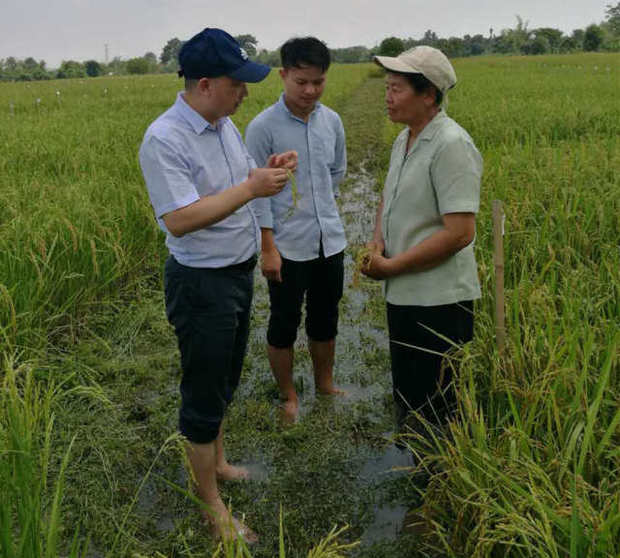
Xu Guowu (first from right) and Dr. Phoudalay - Yuan Longping in Laos (first from right) are making discussions in the agricultural industry park developed by a Chinese enterprise. 。
‘I have been having a dream over many years, which is to export quality Laotian rice of original ecology to other countries,’ said this amicable old lady of more than 60 years old. ‘the Belt and Road turned my dream into a reality. Chinese enterprises not only bring better chances for regular people to develop, but also improve their initiatives and increase their benefits. In addition, it is particularly respectable that they help them become growing experts.’
With new cooperation mode, quality of rice Xu Guowu grew in Laos has been greatly improved, with a decrease in broken rice rate and an improvement in luster. Change of Laotian rice attracted officials including Prime Minister and Minister of Agriculture and Forestry to growing base for investigation. In 2016, Laotian rice officially ended its history of zero export and went into Chinese market. In the same year, Laotian government used the rice grown by Chinese enterprises as national gift to other countries.
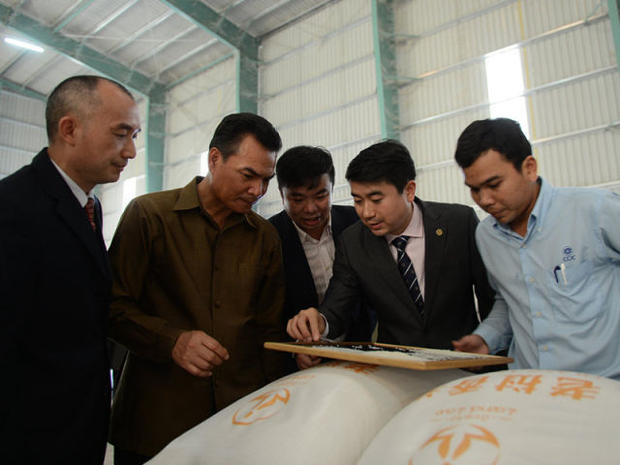
Previous Minister of Agriculture and Forestry of Laos and current Director of Prime Minister’s Office (second from left) is inspecting the agricultural industry park developed by a Chinese enterprise.
Lien Thikeo, Minister of Agriculture and Forestry of Laos said when he was interviewed that the whole process of Laotian rice exporting to China ‘is just the best interpretation of mutual benefits from the Belt and Road.’ Ministry of Agriculture and Forestry of Laos is inviting Xu Guowu to act as a supervisor for agricultural planning in Laos.
‘The Belt and Road brings advanced technology, standards, industry chain and management mode into Laos, achieving exports of Laotian rice. Moreover, Chinese enterprises have done a lot of good deeds people can hardly see or feel, for example, environmental protection,’ Khemmany Pholsena, Minister of Industry and Commerce of Laos told the reporter, ‘We would like to welcome more of such excellent Chinese enterprises to Laos for involvement in the economic development in Laos.’
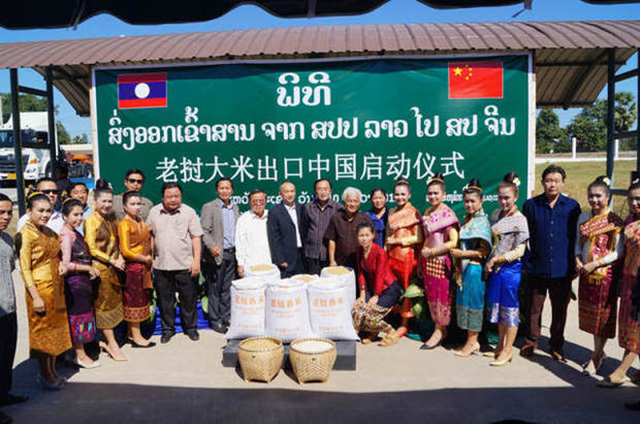
A launching ceremony of export of Laotian rice to China in 2016
China-Laos Railway is on one side, over the mountains, bridging a chasm. On the other side, springs irrigate the farming land, with cow dung as fertilizer and crabs living in harmony with rice in the rice field. Laotian officials including Lien Thikeo and Khemmany Pholsena have witnessed the entire view from a land-locked country to a land-linked country by taking a ride in the Belt and Road express while Xu Guowu and other Chinese entrepreneurs are continuing to irrigate a grain of rice of faith with spring of Silk Roads.
Xu Guowu is apply for Silk Road No. 1 as a name for the new rice variety because in his point of view, the spirit of Silk Roads is a kind of faith, peaceful cooperation and harmonious exchange flowing in a river of lifetime for a thousand years.










